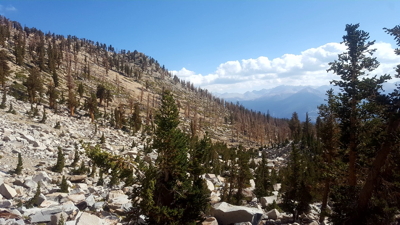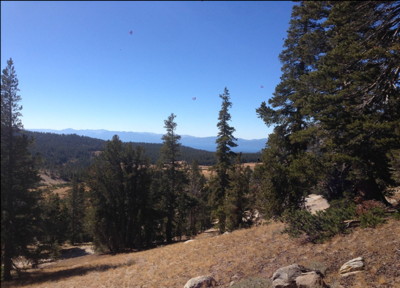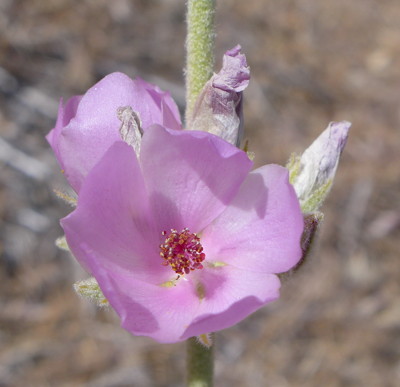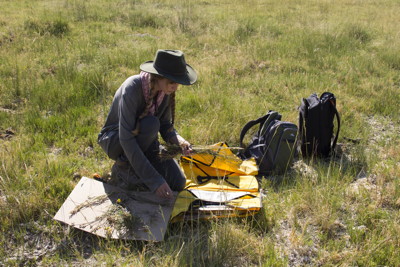2018 DeDecker Botanical Grant Awards
The Bristlecone Chapter of the California Native Plant Society has recently awarded these grants for botanical projects. The Mary DeDecker Botanical Grant Program annually awards funding for projects that increase the understanding and appreciation of our region’s unique native flora.
These grants are supported by the annual native plant sale. Persons funded are required to report on their research findings or how they used the grant money.
2018 DeDecker Botanical Grant Recipients Announced
The Bristlecone Chapter is very pleased to announce the recipients of this year’s DeDecker Botanical Grant. We had many competitive applications. It is through the success of our annual native plant sale and the generous donations of plant enthusiasts that we are able to support these excellent projects:
- Eileen Berbeo, Sierra Nevada buckwheats: species limits and sexual system evolution
Report coming soon
- Emily Brodie, Patterns in post-fire diversity in high elevation forests of the Sierra Nevada mountains
The summer of 2018 was the first field season in a 2-year project designed to answer the question: how does fire severity affect understory diversity and tree regeneration in subalpine forests of the Sierra Nevada? This study is the first to consider the effects of fire on biodiversity in our iconic subalpine forests and comes at a time when subalpine forests in the Sierra Nevada are experiencing climate-driven changes at an unprecedented scale. Densifying forest stands combined with a trend in increasing size and upper elevation of fire in the Sierra Nevada may contribute to larger and more severe fire events in subalpine forests in the near future.
A great vantage on the Willow Fire (2007) in foxtail pine forest, Sequoia National Park.
We sampled 5 fires in 2018 across a range of 2-16 years post-fire and in three different National Parks or Forests. We found that post-fire species richness (or total number of species) increased with fire severity and was greatest in stands that experienced >75% tree mortality by basal area. This is interesting as fires were historically infrequent in subalpine systems and the increase in species cannot be attributed to plants that evolved to fill a post-fire niche. More data and further analyses are needed to understand how members of the high severity plant community differ from lower severity and unburned plant communities. Regenerating tree seedlings had a much different response to fire. When compared to unburned forest, they were found in greater densities after low to moderate severity fire (25-50% tree mortality by basal area) and lower densities after high severity fire (>90% tree mortality by basal area). In the case of tree seedlings, the mechanism for the pattern is more apparent and we can conclude that while conifer seedlings may benefit from the increased light and resources caused by reduced canopy cover after moderate severity burning, they are damaged by severe fire.
For more photos - see report in PDF version here.
- Trevor Carter, Changes in leaf morphology in Pinus albicaulis using decades of herbarium specimens
Trevor Carter – 2018 Dedecker Grant Progress Report
A lovely view overlooking the Lake Tahoe Basin on top of Mt. Rose while collecting data on whitebark pine
Throughout the 2018 field season I have collected data from 30 whitebark pine trees at four different populations. Two of my original seven field sites did not have enough trees to be valid study sites, and one of my original seven field sites was not currently accessible. The field sites I was able to visit include Mt. Rose, the eastern Sierras, Jarbidge, and the Ruby Mountains. All of these sites were incredibly beautiful. I have begun the lab analysis of my field samples; I am in the process of counting leaf quantity on each of my samples. Lab analysis has been slow and steady. I aim to finish all my analysis mid-March to begin a write up of my results.
For more photos - see report in PDF version here.
- Isaac Marck, Systematics of the rock daisies (genus Perityle; Asteraceae) of Inyo County, California
Report coming soon
- Keir Morse, Taxonomy and conservation of the genus Malacothamnus (Malvaceae)
Keir Morse - 2018 DeDecker Botanical Grant Progress Report
Malacothamnus orbiculatus in bloom
The genus Malacothamnus (the bush-mallows) is a taxonomically controversial group with 16 taxa currently included in the CNPS Rare Plant Ranking system. For my PhD dissertation, I am using morphometric analyses, DNA Sequencing, comparative phenology, and extensive field evaluations to resolve the taxonomy of the genus and evaluate the conservation status of each taxon.
During the 2018 season, I made significant progress in my research, surveying much of the state. I mapped over 1,600 points of Malacothamnus on Calflora, collected over 100 voucher specimens of 21+ possible taxa for morphometric and DNA analyses, and made 19 seed collections of 15 possible taxa to deposit in the Rancho Santa Ana Botanic Garden seed bank. My first batch of DNA has been sequenced and the data from this will be used to help clarify where I need to focus my efforts for the coming season.
In the Bristlecone Chapter area, I found seven populations of Malacothamnus orbiculatus from the Chimney Peak area in the south to the Big Pine area in the north. Only one population was found east of Highway 395 on Hunter Mountain. Any observations of additional populations east of Highway 395 or north of Big Pine would be most welcome.
For more photos - see report in PDF version here.
- Jackie Shay, Exploring Fungal Endophytes of Native Monkey Flowers
Report coming soon
- Sophia Winitsky (Rancho Santa Ana Botanic Garden Claremont Graduate University): A vascular flora of the Adobe Hills and Valley, Mono County, CA
-
2018 Update
Fieldwork is complete for the Flora for the Adobe Valley project, thanks to the CNPS Bristlecone Chapter! Throughout 2016-2018, a total of 59 days were spent in the field documenting the plants of the Adobe Valley and surrounding hills, with the majority of the specimens collected in the months of May, June and July in 2017. Currently, identifications are wrapping up of these collections and the results of this inventory will be presented in an annotated checklist, which will include along with a vegetation map and descriptions.So far, a total of 394 minimum-ranked taxa (species, subspecies, varieties, hybrids) were documented throughout this study, representing 59 plan families, 189 genera, and 367 species (sensu Jepson eFlora 2018). The most diverse families were Asteraceae (71), Poaceae (35), Boraginaceae (31), Brassicaceae (25) and Polemoniaceae (24). The largest genera in the study area are Eriogonum (14), Cryptantha (10), Carex (11) and Astragalus (9). There are 27 taxa included in this study that have a sensitive status according to the California Native Plant Society. One species of sensitive taxa was not rediscovered: Goodmania luteola collected by Dean Taylor. Seven sensitive species had not been collected from within the study area before: Boechera dispar, Boechera cobrensis, Astragalus oophorus var. oophorus, Micromonolepis pusilla, Thelypodium milleflorum, Thelypodium integrifolium subsp. complanatum and Eremothera boothii var. intermedia.
-
The Adobe Hills Valley where Sophia Winitsky is continuing to conduct her Master’s thesis work with the assistance of DeDecker Botanical Grants
Progress Report on the Flora of the Adobe Valley from 2017
For my master’s thesis, with the generous support of the Bristlecone Chapter of CNPS, I am undertaking a floristic inventory of the Adobe Valley and surrounding hills in Mono County, CA. This past field season, I was able to collect over 1,400 specimens. Since most of the historic collections have been along Highway 120 and other roads, I tried to focus on collecting from the less explored peaks and remote areas near the Nevada border. Some of the rare taxa documented this year that were either new to the area, or were found in new locations within the Adobe Valley include Tetradymia tetrameres, Allium atrorubens var. atrorubens, Micromonolepis pusilla, and Eremothera boothii var. boothii. The most endangered endemic plant in the area is Calochortus excavatus, which had a very prolific bloom this year along the shore of Black Lake.
My study area received high levels of precipitation this past winter, which allowed for many annual plants to germinate that may not be present each year, adding to the overall count of taxa new to the area. This winter I am working on identifying my specimens, traveling to herbaria that hold specimens of the region, preparing for my next field season, and presenting my project’s progress at the CNPS statewide conference. Thank you to White Mountain Research Station and the Bristlecone Chapter’s Mary DeDecker Botanical Grant for helping me fulfill my research goals! As well as to Mary DeDecker herself for paving the way and documenting rare and interesting taxa in the Adobe Valley.




